Table of Contents
- Broken link building remains effective but should be used as a supportive, not primary, SEO tactic in 2025.
- Focus on replacing broken links from high-traffic, high-authority pages with relevant, valuable content.
- Use tools like Ahrefs and Archive.org to identify broken content and assess backlink quality and freshness.
- Personalized, value-driven outreach significantly boosts success rates; avoid mass, generic emails.
Broken link building has been in the traditional link building toolkit since the early days of SEO.
It remains a white hat link building technique, but it needs to be reframed.
I’ve found that broken link building is an excellent supportive link building tactic, as opposed to being your sole link building tactic.
The time it takes to find quality, relevant sites may be off-putting to some looking for quick links, but the benefits definitely outweigh the effort needed.
In this post, I’ll walk you through the way you’ve probably been doing broken link building and suggest a new way of thinking about broken links for the future.
What is Broken Link Building?
Broken link building is when you find a broken link on an external site and recommend a replacement from your site.
For folks newer to SEO, replacing broken links is a good idea because a page with too many broken links signals Google that the page is outdated and less valuable.
So, if you’re concerned about your page ranking, keeping it all up to date is best.
There are two main ways to wield this tactic:
1. Find a broken link, recreate the broken content, and pitch it to the people linking to the broken link
2. Find a broken link, use it as an outreach technique
1. Replacing Broken Content
The most effective way to use this tactic is to create a post specifically designed to replace a broken piece of content.
For example, if I’ve found that an email outreach tool created by Outreachers.io has 500 linking root domains (LRD) but is now broken, I’d make a similar tool and pitch all the sites linked to the Outreachers.io link.
2. Providing Value (and Getting a Foot in the Door)
In my C.H.A.M.P. Outreach Method, I talk about helping your outreach target when reaching out to them. One way to help them is to let them know they have a broken link on their page.
This gets their attention and provides some value.
Then, while they are there, you can pitch your new post. The new post doesn’t necessarily need to replace the broken one, but the two should be related enough that it makes sense for your prospect to make the addition.
Is It Still Used in 2024?
Links die all the time. One link building statistic I point to a lot comes from Ahrefs: at least 66.5% of links to sites in the last nine years are dead.
However, even with so many broken links, broken link building is only considered effective by about 18% of SEOs, according to a recent study from Editorial.Link.
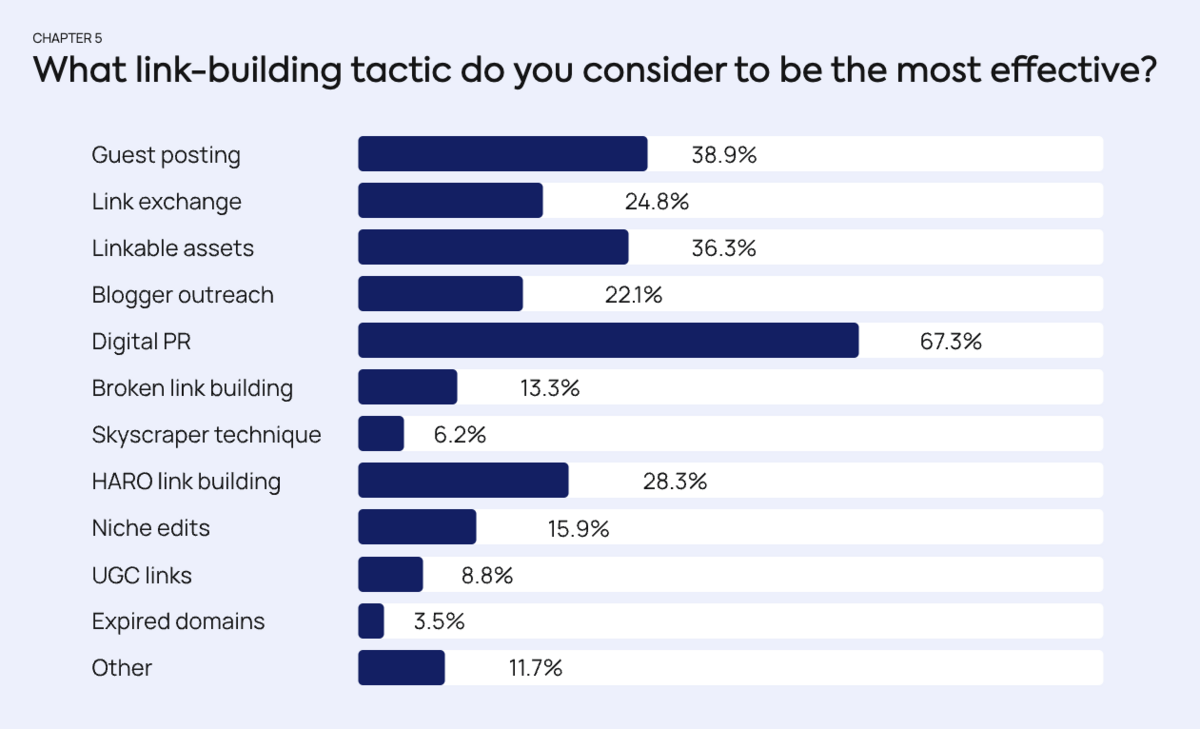
Why is this number so low?
Like every SEO tactic, most aren’t used correctly and have been spammed to death.
The most crucial reason broken link building isn’t as impactful is that it is done on links that don’t matter.
For example, getting a link on a page with no traffic buried within a site isn’t as valuable to Google.
Conversely, getting links on a page with lots of eyeballs can be very valuable.
For example, we talked to Aaron Anderson of Linkpitch.io in our podcast, and he praised broken link building.
Well, broken link building is great because you get links from a wide range of pages. So, let’s say we find a broken link, and then we’re just looking at all the pages that are linking to that broken link.
So, some of the pages and links might come from resource pages, and some might come from within content.
He said he’s also been able to get links from high-end news sources like the New York Times or Parade.
So, it clearly still works.
How to Do Broken Link Building in 2024
Now that we know it still works, let’s take the steps necessary for broken link building. The most common way is to identify broken content with many links, build something better, and pitch your content to the sites linking to the broken content.
But in this section, we’ll go through both ways to use broken link building to your advantage.
Step 1: Find Relevant, Broken Content
You can find broken content using a tool like Ahrefs’ Content Explorer.
You may already have a piece of content in mind or even have created content already. However, I like to use Ahrefs’ Content Explorer to find content ideas.
This way, I know that there is an outreach market for my content.
Let’s pretend I’m in graphic design and want to create content around logos.
Do a general search for “logo” in the content’s title. Then, toggle the links to display “Only broken.”
These logo templates have 77 referring domains.
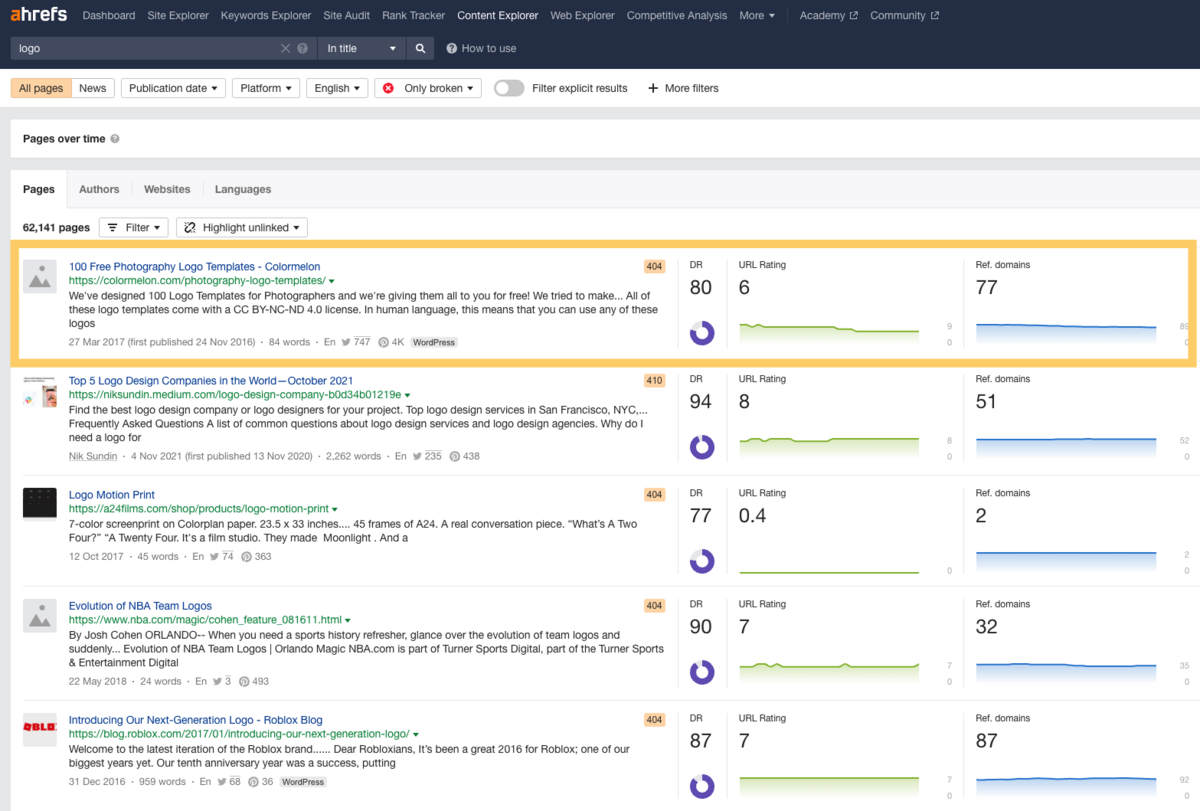
I might want to be more specific with my search and try something like “logo maker” in the title.
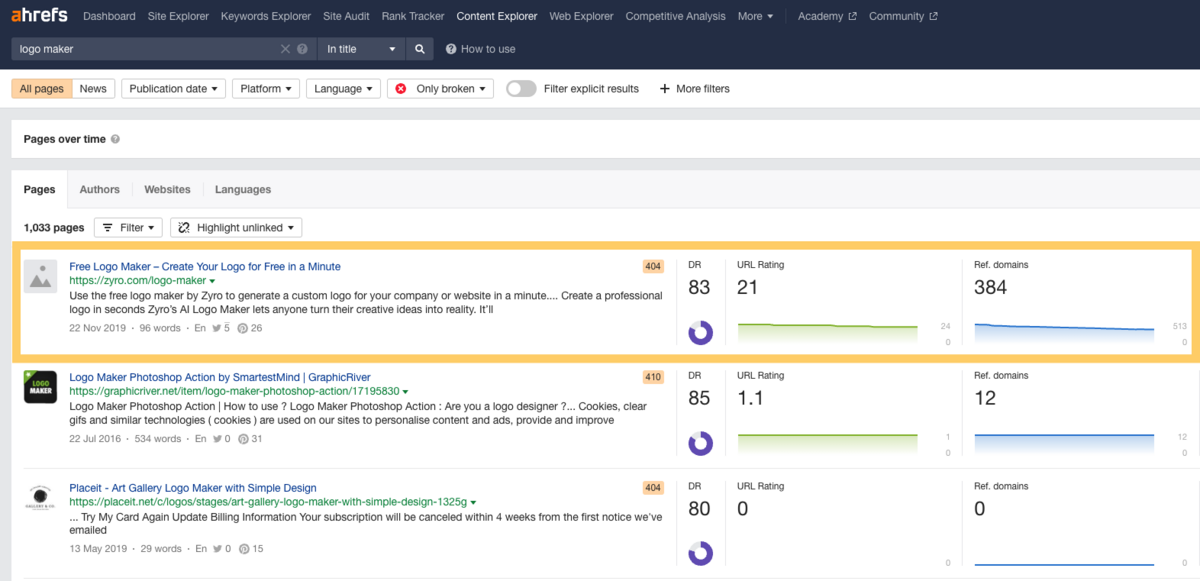
I see a site called Zyro has a free logo maker with 384 referring domains. After clicking on the site, I can confirm that it is broken.

I also like to spot-check what the content looked like, which you can do by clicking on the green domain and choosing Archive.org.
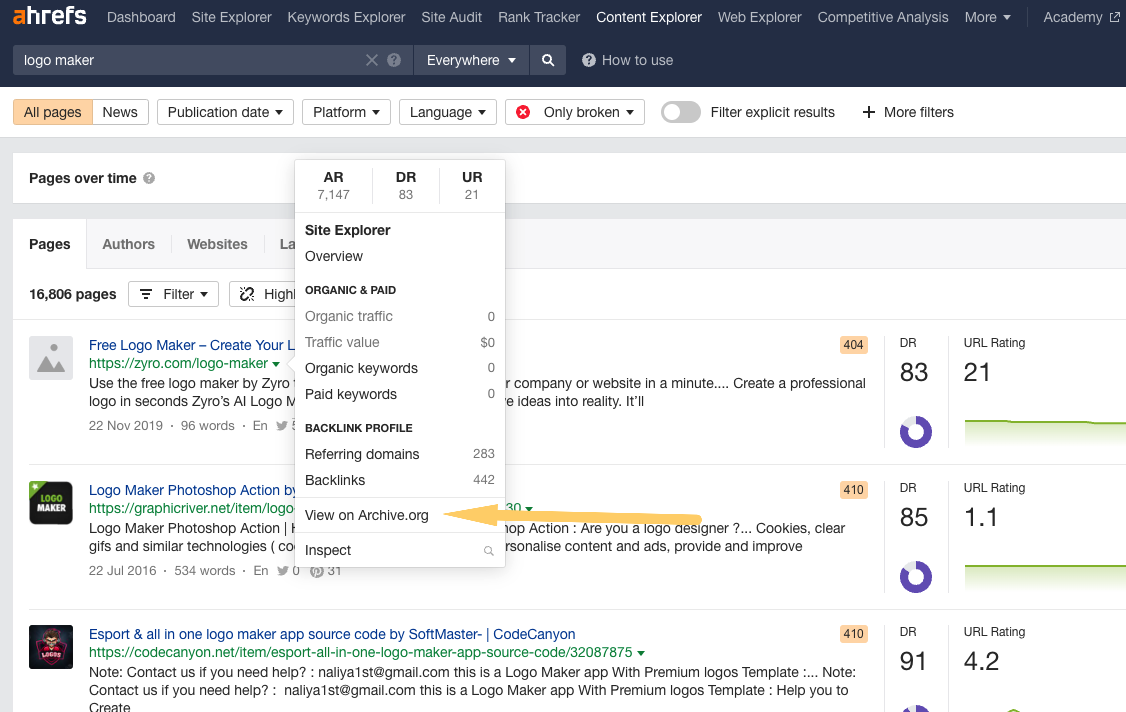
This will take you directly to the Internet Archive’s Wayback Machine.
Here’s what it used to look like:
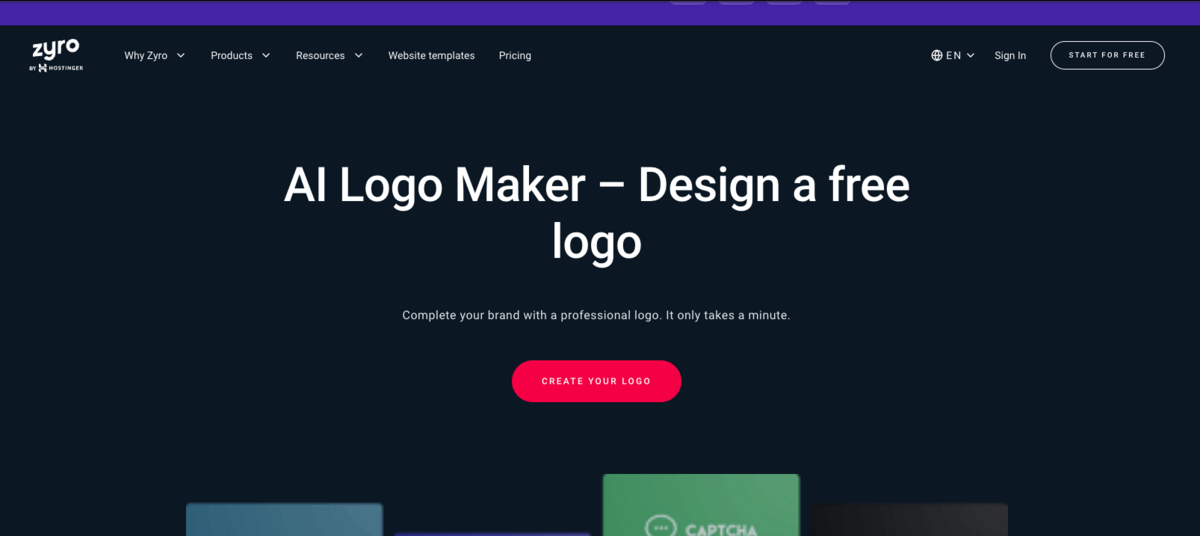
(After some research, it appears that Hostinger bought Zygo. They do have a new AI Logo Maker on Hostinger, so there’s a chance they just forgot to redirect the old content to the new domain. This actually becomes important as we frame our outreach email later.)
But before creating a logo maker, I want to confirm the quality of the referring domains.
Step 2: Confirm the Quality
At this point, I want to make sure the juice is worth the squeeze. So, I want to ensure that there are quality websites in that list that will help my content gain links.
If I click on the result in Content Explorer, it will expand and show me a list of the referring domains in their Site Explorer, giving me a much more detailed look at the sites linking to the logo marker.
However, I like to look at the Backlinks, as they will provide me with more details for my evaluation.
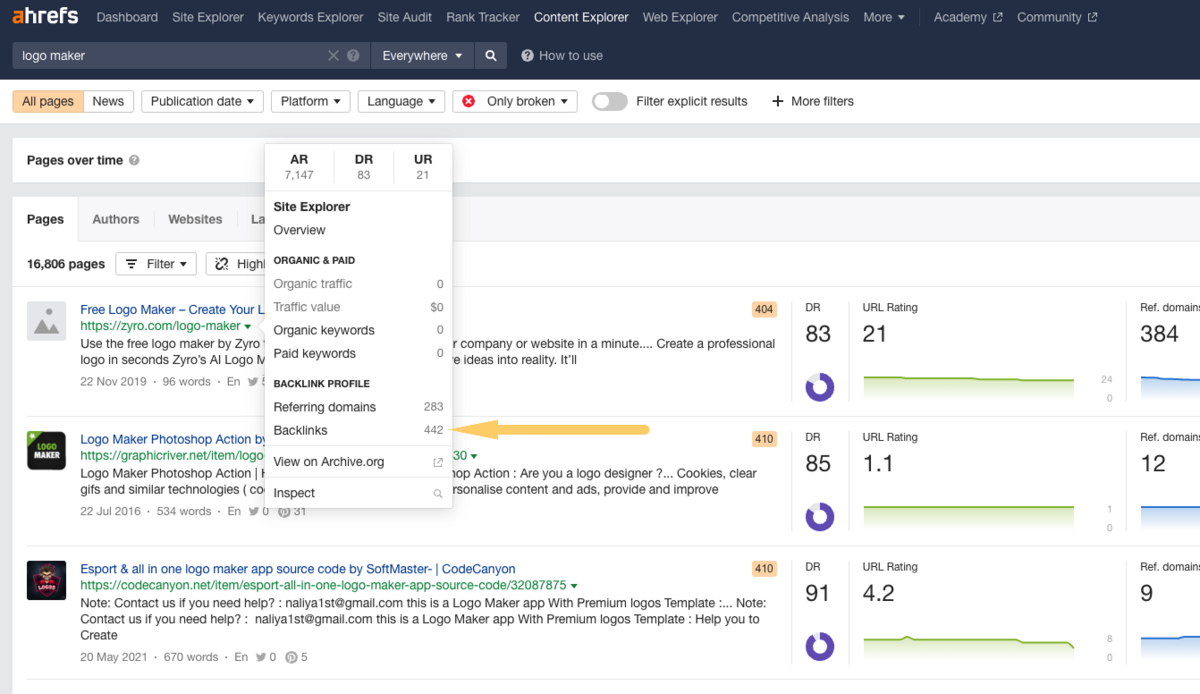
Always ensure that you are looking at One link per domain.
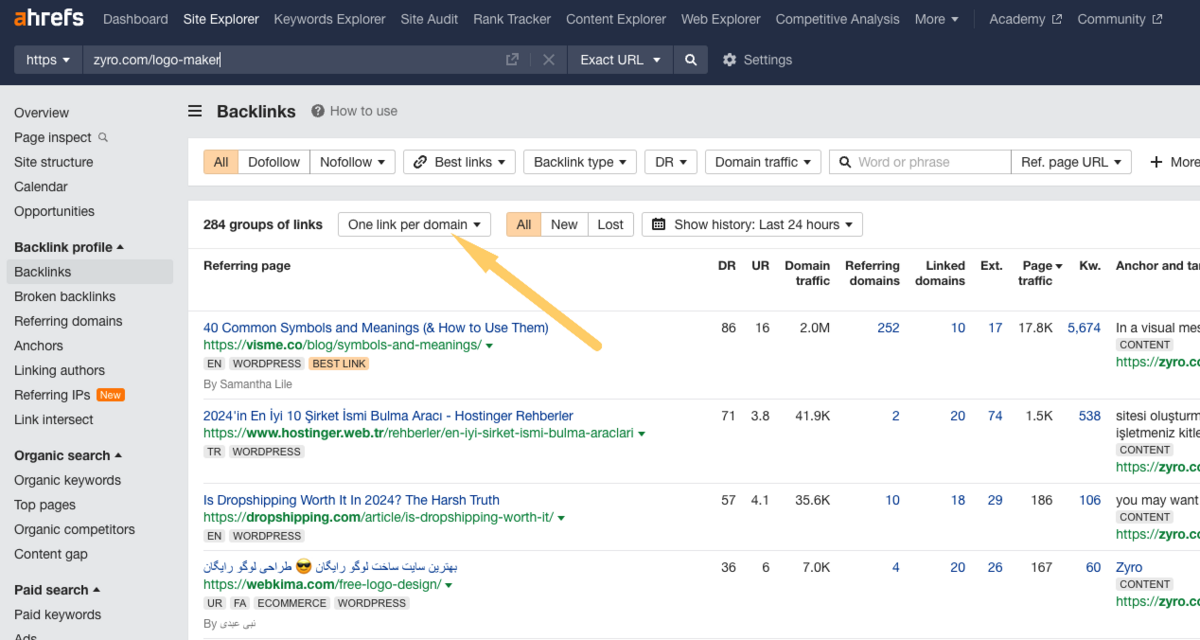
Right away, that number jumps down to 284.
Ahrefs’ Content Explorer shows all links, while their Site Explorer has a time frame filter.
The 284 is current as of the last 24 hours.
(As Ahrefs showed before in their link rot study, links always drop for various reasons.)

Now, we can drill down the quality.
High Authority and High Traffic
I can use Ahrefs’ “Best links” filter to identify the number of quality links. I’ll set DR to greater than 75 and the Traffic to greater than 10000.
I also want Dofollow only.
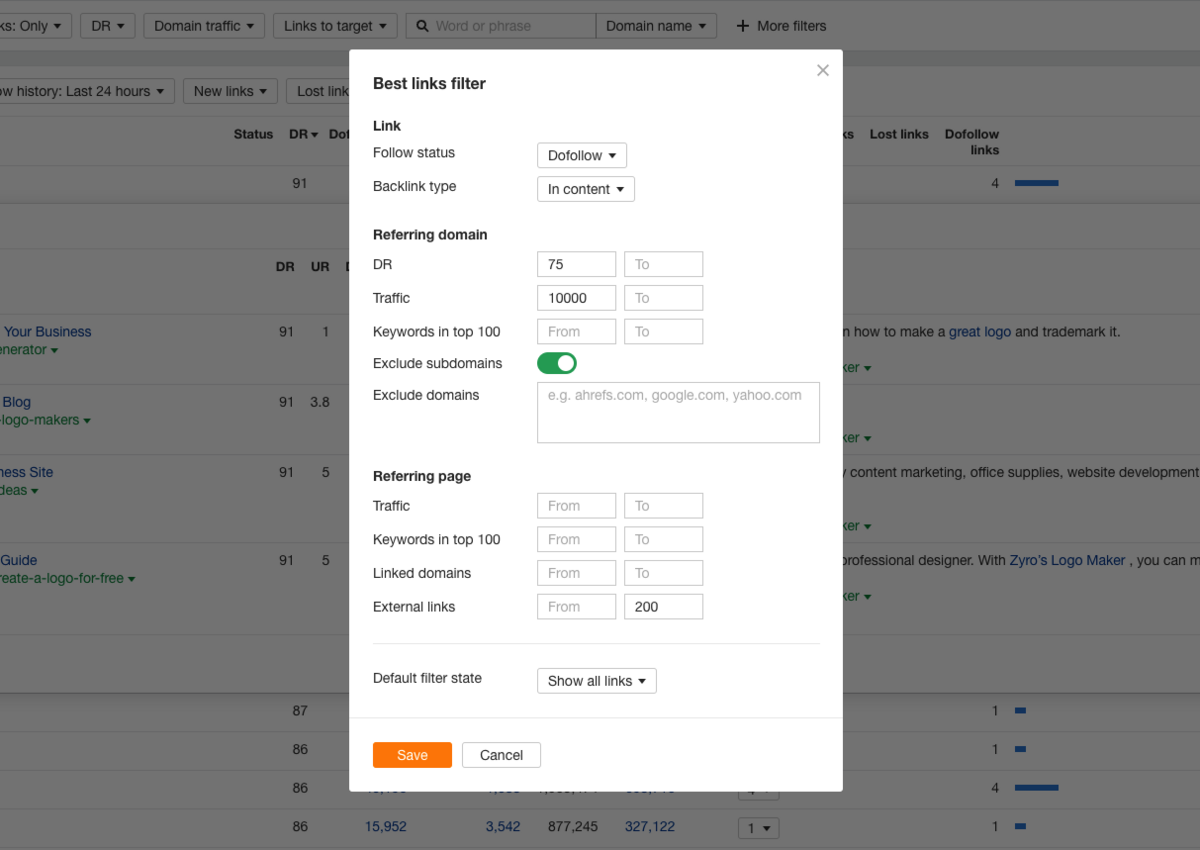
With this filter, that initial list of 284 dropped to 12 quality referring domains. (I’ve also set to look at English only, bringing this down to 11.)
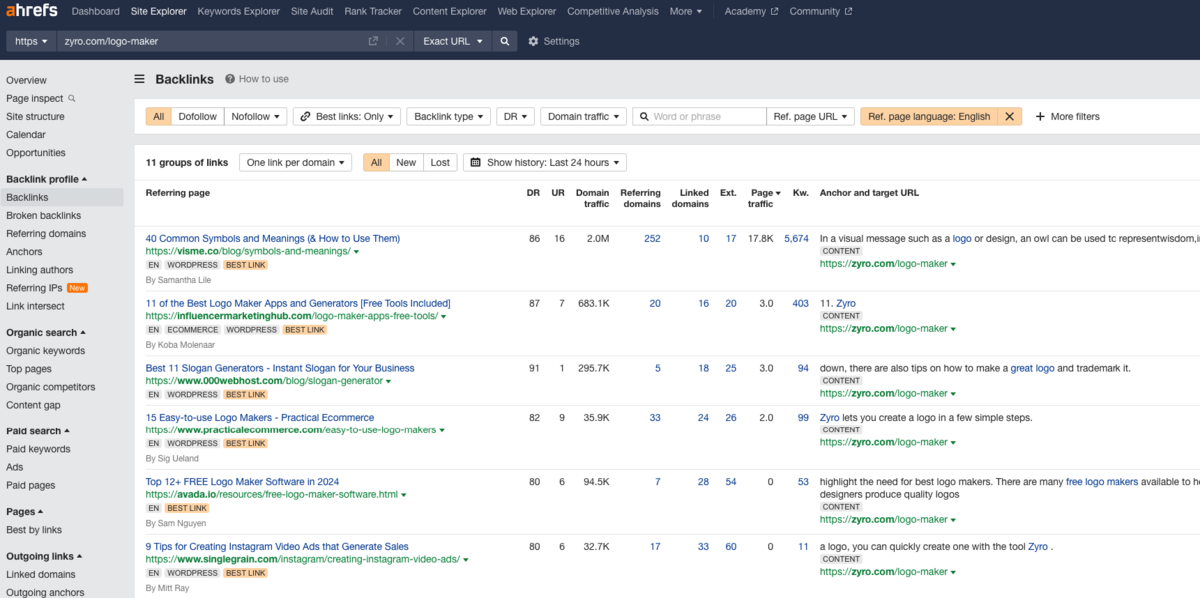
However, a site’s authority doesn’t mean much if the page doesn’t get much love. So we want to sort even more.
High Page Authority
You want to watch the UR or URL Rating. This measures the page’s strength based on its backlink portfolio. (A page might have an incredibly high DR, but the UR is very low.)
For example, this page from 000webhost has a DR of 91 but a UR of 1. Ahrefs measures it as having three visits per month, which is not worth my time for a broken backlink outreach.
I’d remove this from the list, bringing us down to 10.
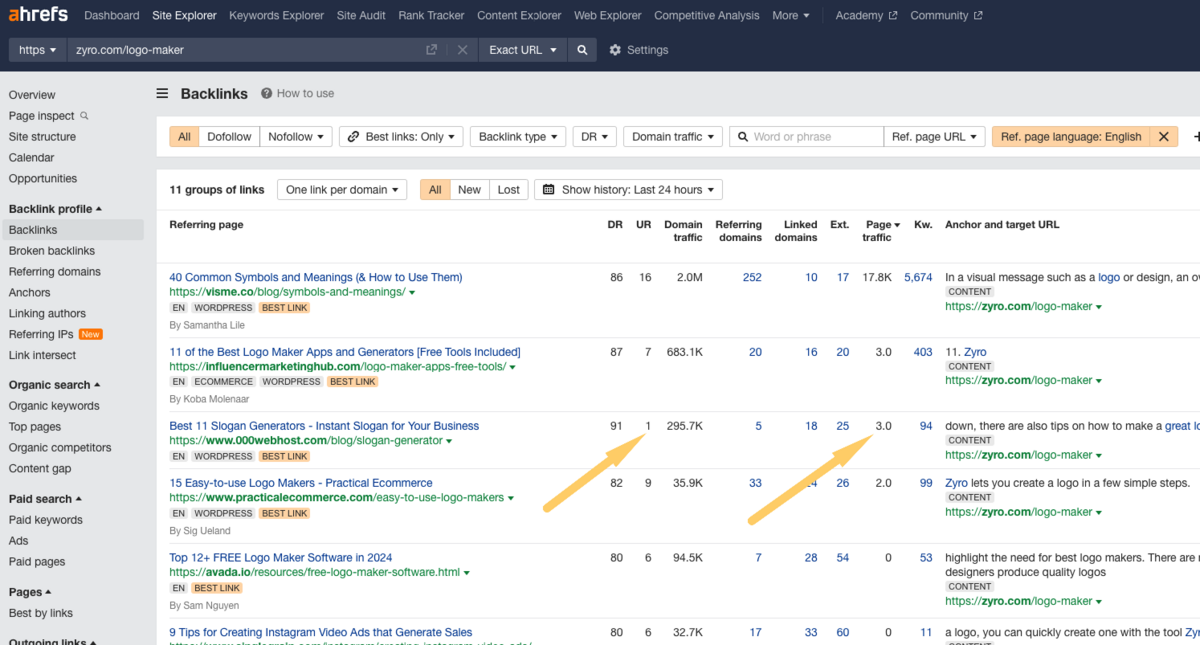
(Based on my experience, a UR ~5 equates to about 1000 monthly visits.)
This new number of 10 links a good baseline, but I recommend spot-checking the remaining websites for freshness.
Page Freshness
You’ll also want to look at a page’s freshness. If the page hasn’t been updated in years, then it’s probably not worth much to replace.
I aim for content published or updated in the last year.
You can really only check this by clicking into the post itself and looking at the date.
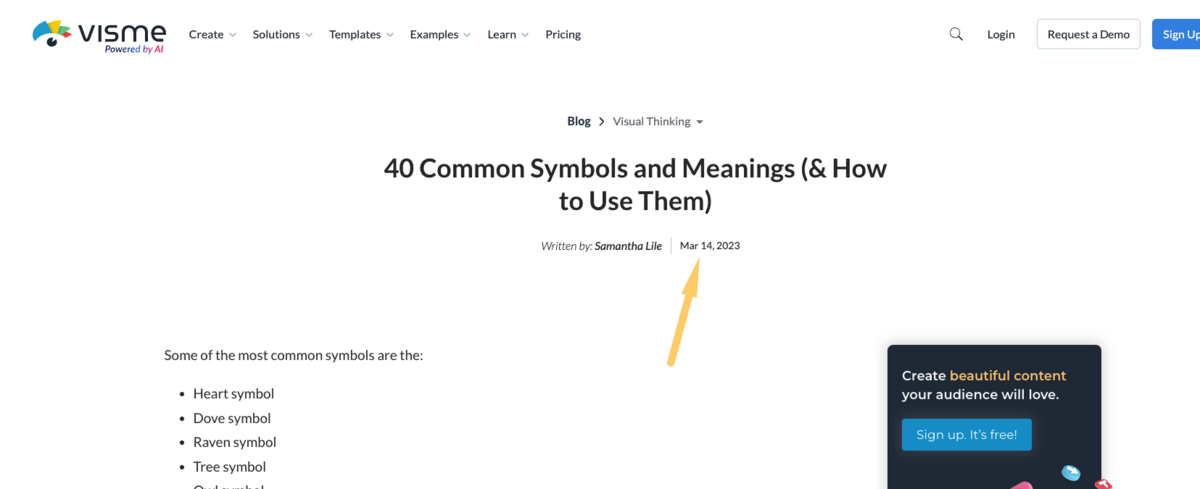
The bottom line is that ten links may not appear to be all that much, but they can move the needle if they are highly relevant and high-quality.
And as I said before, broken link-building can act as a supportive link-building tactic, rather than the main source of links for a post.
So, let’s assume we want to start outreach to our ten sites.
Step 3: Find Contact Information
Once you’ve identified the list of quality sites with broken links, you need to find the contact information for each contact.
I’ve written an entire post on finding email addresses, so I won’t recap it here, but here are the high-level tips.
Use BuzzStream
The easiest way to find contact information is with BuzzStream’s BuzzMarker.
First, I start a project on BuzzStream and name it.
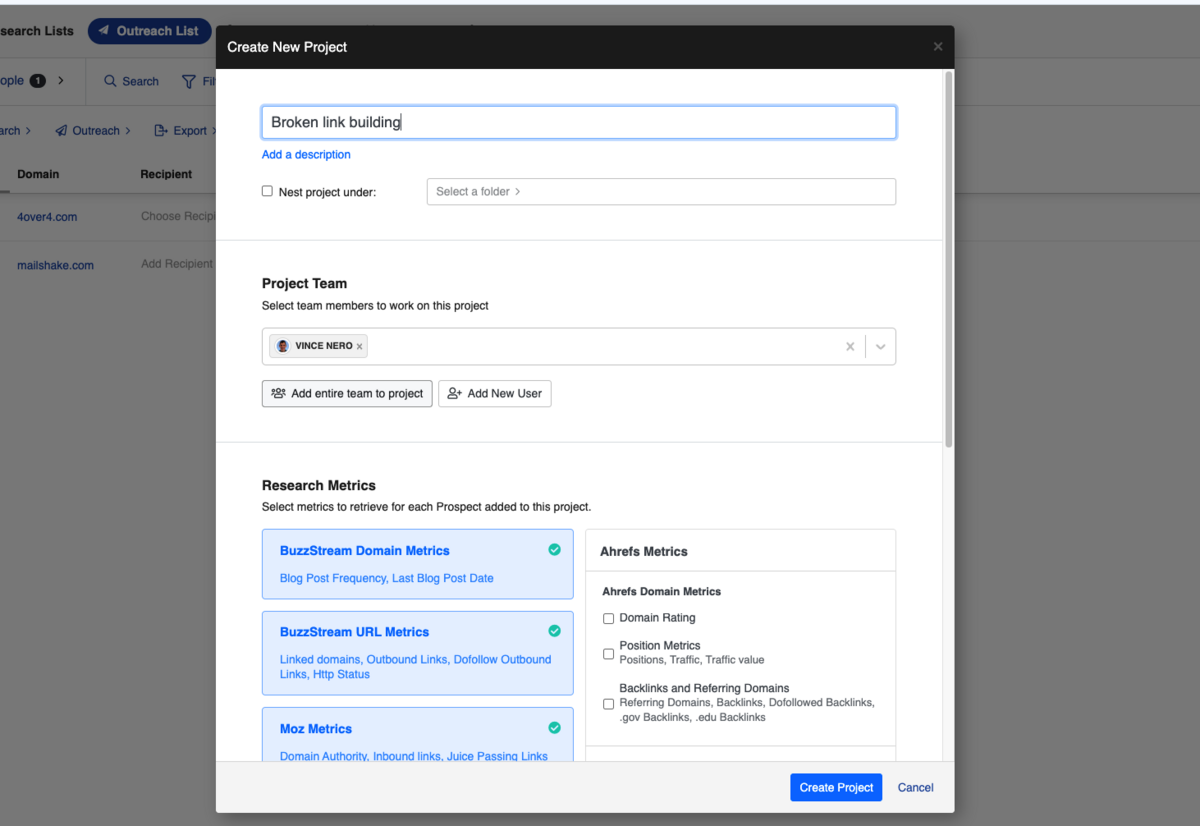
Then, when I open the URLs, the BuzzMarker will pull in any contact information it finds.

However, sometimes the website doesn’t display the necessary information, so you’ll have to do some digging.
That’s when I turned to Google search.
Use Google Search
When I click on Emma Y’s name in 000WebHost, I can see that her full name is Emma Young.
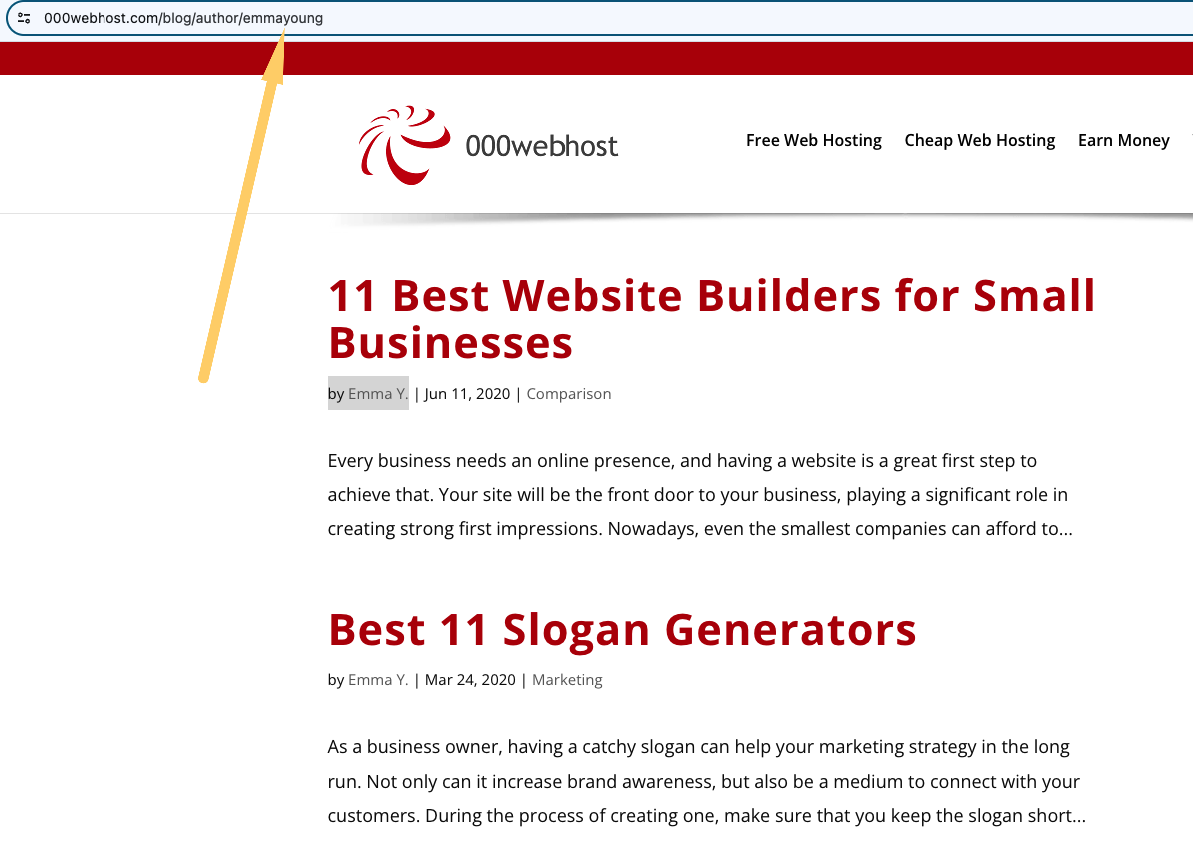
So, now I just Google Emma Young 000Webhost and found her on Linkedin.
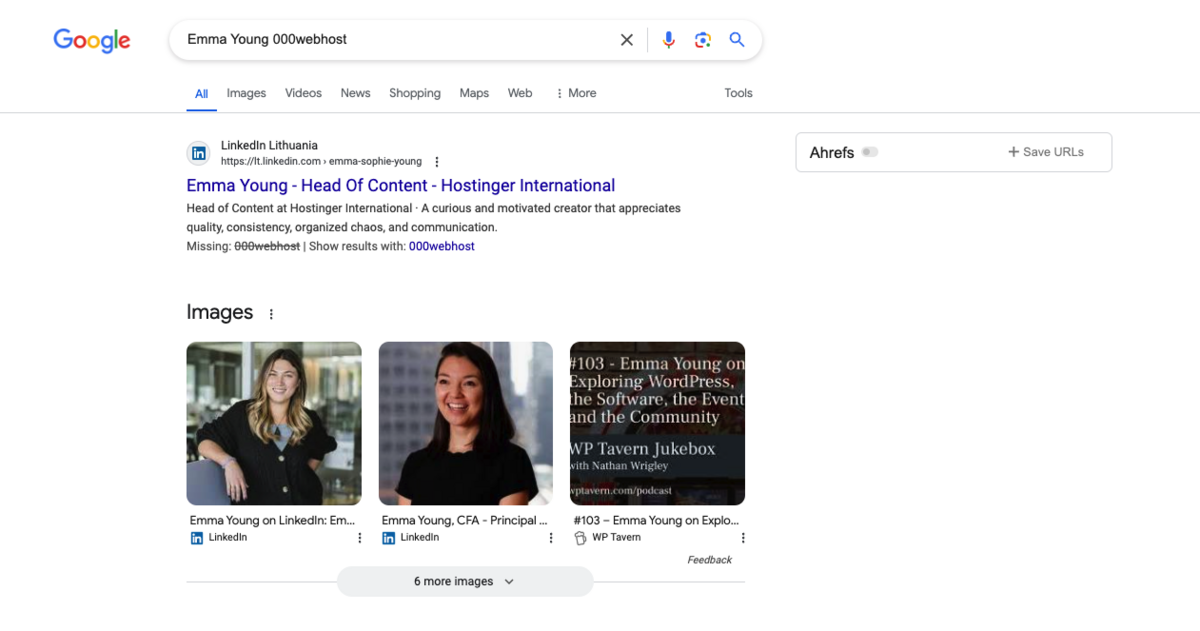
Once you have LinkedIn, you can easily use a tool like Wiza.
This found her email immediately.
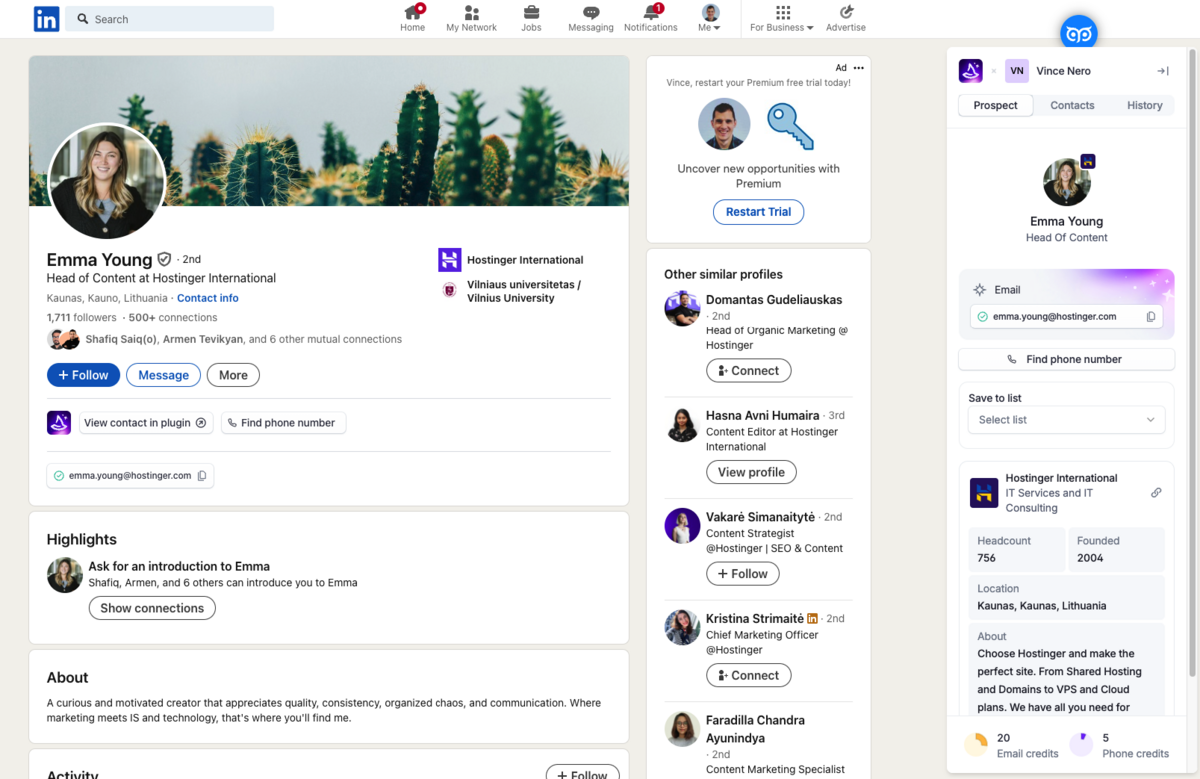
If you don’t have a tool like Wiza, or can’t find your prospect on Google, you can always try Hunter.
Try Hunter
Hunter.io will scour the web for mentions of the email address from your target site. Hunter integrates directly with BuzzStream.
Let’s try Hunter for another contact like Visme’s Samantha Lile.
If I click on Hunter’s Chrome Extension, I’ll see that her email doesn’t come up, but Hunter provides an email pattern for the email addresses on the site.
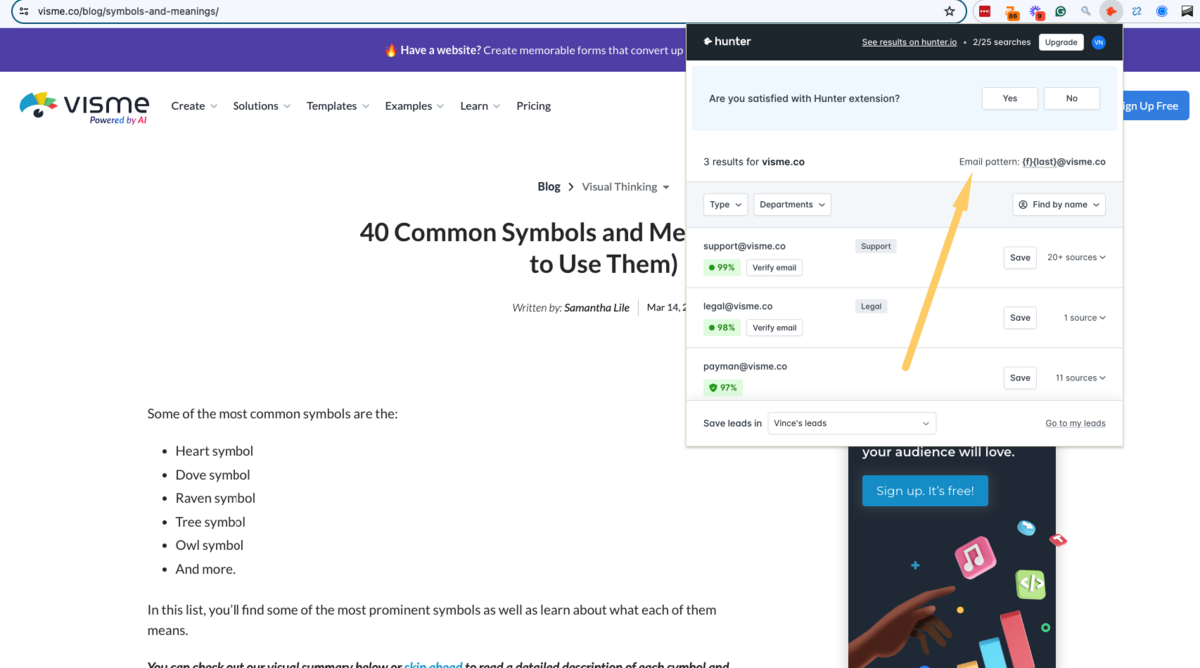
So, I’m fairly confident SLile@visme.com is the email address I’d like to go with for Visme.
Step 4: Craft Your Email
The last step is to craft your email.
The key to broken link building outreach (like all outreach) is doing all of the heavy lifting for your target.
So, you want to tell your target where the broken link is, what the broken link is, and even new copy to work in your new link (if applicable.)
The template should look something like this:
Broken link and replacement for [Website Name]
Hey [First Name],
I read your article on [Research Page Title] and really appreciated [Personalize]. I just thought you’d like to know that I found a broken link at [link anchor text].
I recently wrote about [topic] here [link] and wondered if you’d consider using my post to replace your broken link.
I’d really appreciate it, and I think it would help give some excellent context to your readers.
Let me know what you think!
Let’s craft up an email for Samantha Lile of Visme.
Broken link and replacement for Visme
Hi Samantha,
I was just checking out your post about symbol meanings. (I like the infographic and am glad it helped get you so many backlinks!)
I thought you’d like to know that the link to the anchor text “logo” in the last paragraph of section 6 is broken.
I recently created a logo maker here and wondered if you’d consider using my post to replace your broken link.
I’d really appreciate it, and I think it would help give some excellent context to your readers.
Thanks – I look forward to hearing from you.
That’s it.
This should be more than enough to get them to link back.
A quick note about personalization
Don’t force it. If you can’t come up with anything interesting, don’t say anything. Just be direct. It’s way better to be authentic than to come off as phony.
I hate nothing more than getting an email that has fake personalization like this clearly AI-generated block of nonsense:

You can learn more about personalizing emails in my guide.
How to Use a Broken Link for General Link Outreach
The lesser-used way to use broken links to your advantage is to use them to provide value but then pitch a related post rather than a replacement.
I’ve found that this works best as a passive approach.
You use it only when you encounter a related page with a broken link rather than seeking out pages with broken links.
For this, you need a Chrome Extension like Atomseo’s backlink checker.
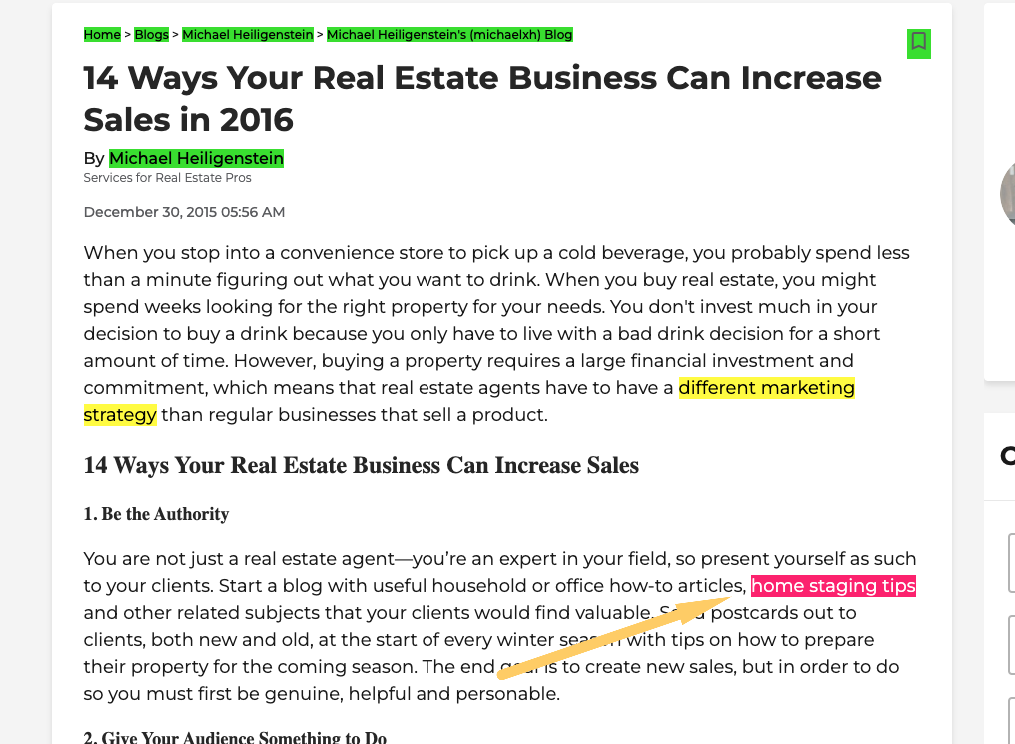
When you come across a broken link, it becomes your way into their inbox.
In your post, 14 Ways Your Real Estate Business Can Increase Sales in 2016, I noticed a broken link.
Specifically, the link with the anchor text “home staging tips” under the first section, “Be the Authority.”
I just thought you’d like to know!
I also have a resource that I thought your readers might appreciate. We created a comprehensive guide to real estate sales.
I thought it might be an excellent addition to your post under section 5.
You can see it
- here
.
Let me know what you think!
This approach works exceptionally well when building resource page link because resource pages tend to have broken links.
For example, say I was trying to get links to a senior citizen’s cyber security guide.
Here is a .gov page that lists some helpful resources for seniors. Using a Chrome Extension to check for backlinks, I’ve found that one links (in pink) is broken.
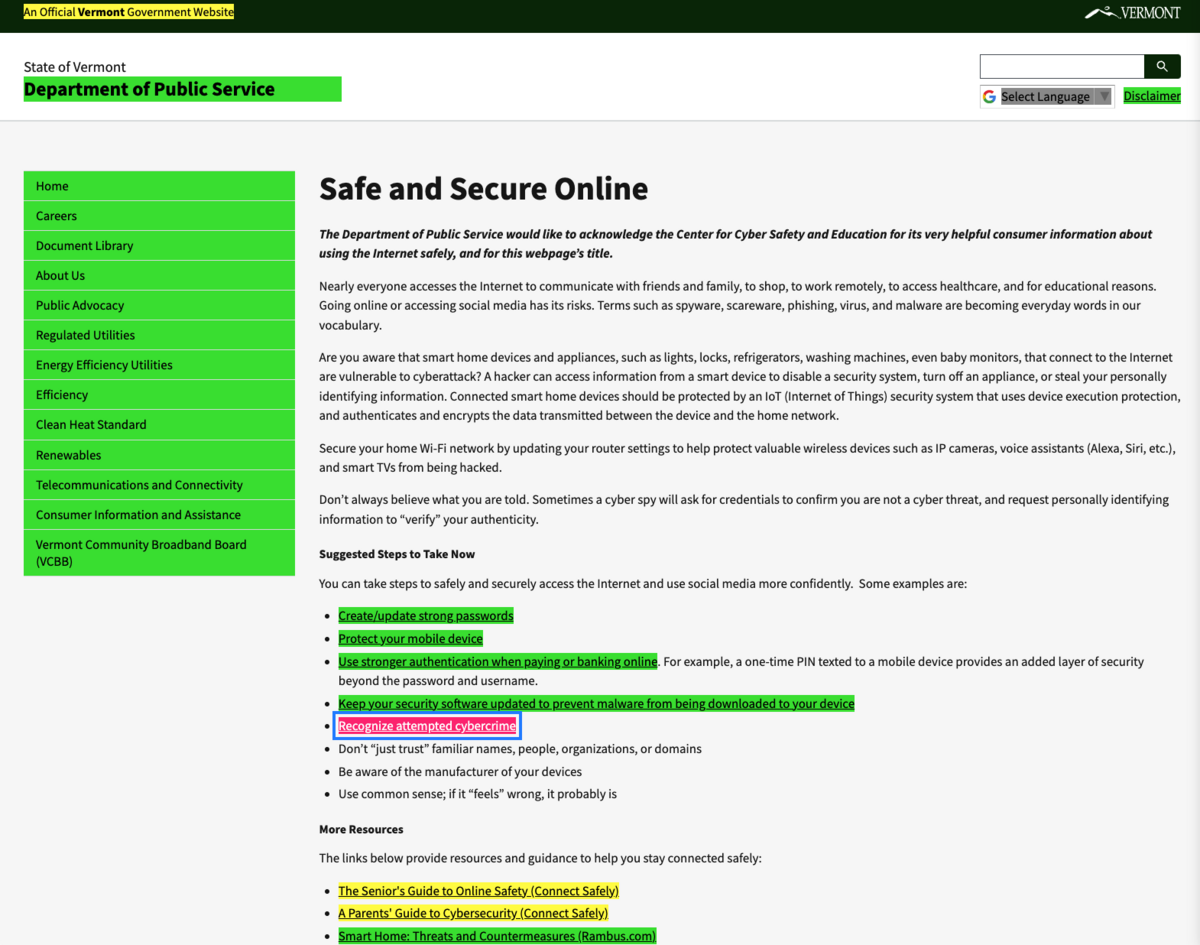
Now, I have a reason for getting into their inbox. Instead of recommending a replacement, I am notifying them about a broken link and pitching an additional link while I have their attention.
Broken Link Building in 2025 and Beyond
Here’s the cold, hard truth: the high-quality pages that can move the needle are typically ones without broken links. That’s one of the reasons they are high-quality.
So, this tactic is going to get harder and harder.
But remember, you probably don’t need as many links as you think. A few high-quality, relevant links may be able to help you rank.

 End-to-end outreach workflow
End-to-end outreach workflow


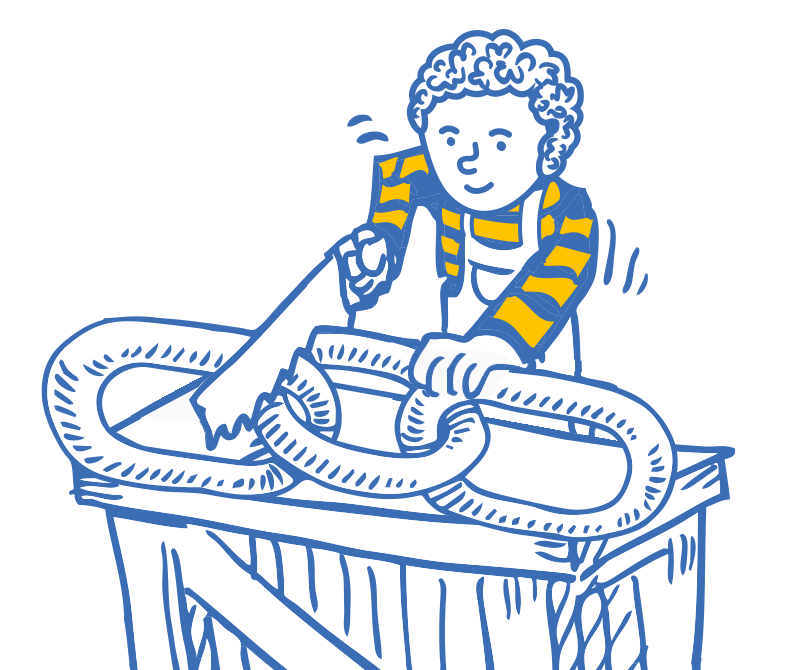
 Check out the BuzzStream Podcast
Check out the BuzzStream Podcast







